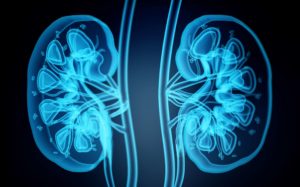What are the 5 P’s of CKD?
Keep track of your kidney data with PKB

So. What are the 5 P’s (principles) of CKD care?
Pressure (blood, BP)
- Keep it normal/low – 130/80 or below all the time – especially with an ACE/ARB (ACE inhibitor (e.g. Ramipril) or angiotensin receptor antagonist (e.g. Losartan)), in most patients
“Having normal/low BP is the single most useful thing you can do to protect your kidneys”
Protein
- Reduce protein in the urine – ask your doctor why are you not on an ACE/ARB and SGLT2i tablet (e.g. Dapagliflozin)
- Reduce protein in your diet – this may improve symptoms, and (possibly) slow progression of CKD.
“For most patients, if you have CKD diagnosed, try to do these three things in three months:
(1) start ACE/ARB
(2) add SGLT2i
(3) get BP under 130/80″
Prevention
- Don’t smoke, keep your weight down and exercise
- Control other diseases (e.g. diabetes, chronic heart failure (CHF))
- Progression – know your latest eGFR/creatinine. You need to know how good/bad your kidney function is at all times. You can follow it on the Patient Knows Best website
Professional engagement
Attend all appointments reliably, with your:
- Doctor (GP or nephrologist – consider waiting longer to see a senior GP, or your hospital consultant nephrologist)
- Nurse (GP practice, or renal specialist)
- Allied health professional (AHP, e.g. dietitian)
Please ask to be referred to a nephrologist (kidney specialist) if you have: CKD4, CKD3B and deteriorating, nephrotic syndrome, or CKD and poor BP control on 3 BP drugs.
Prescribing
- Know your tablets – and take them reliably (why not ask for a pharmacy review, to check tablets and see if any can be stopped?)
Summary
We have described the 5 P’s (principles) of CKD care. And indicated who needs to be referred to nephrology. We hope it has been helpful.
Last Reviewed on 1 July 2024
